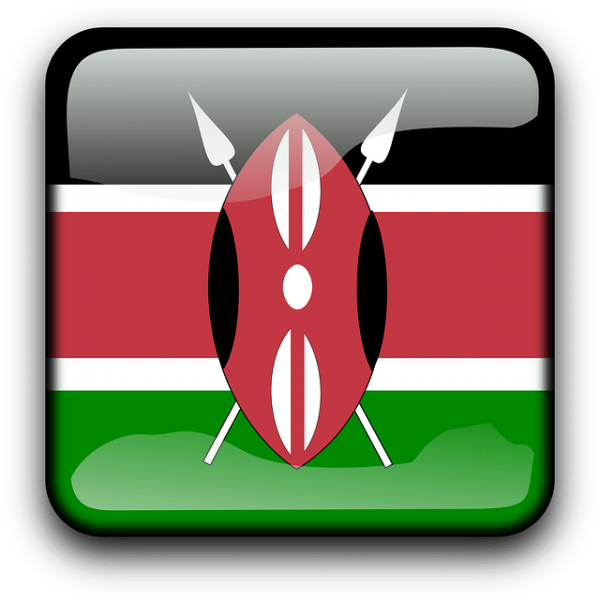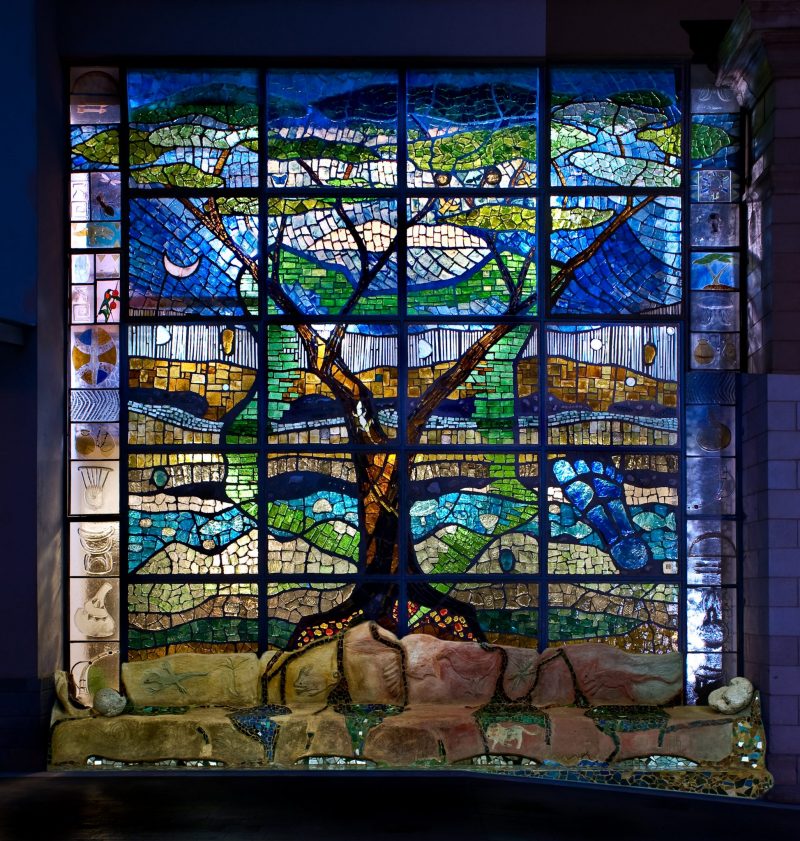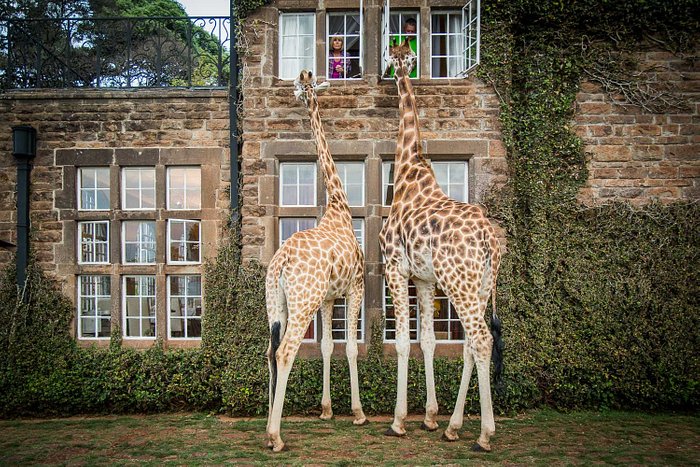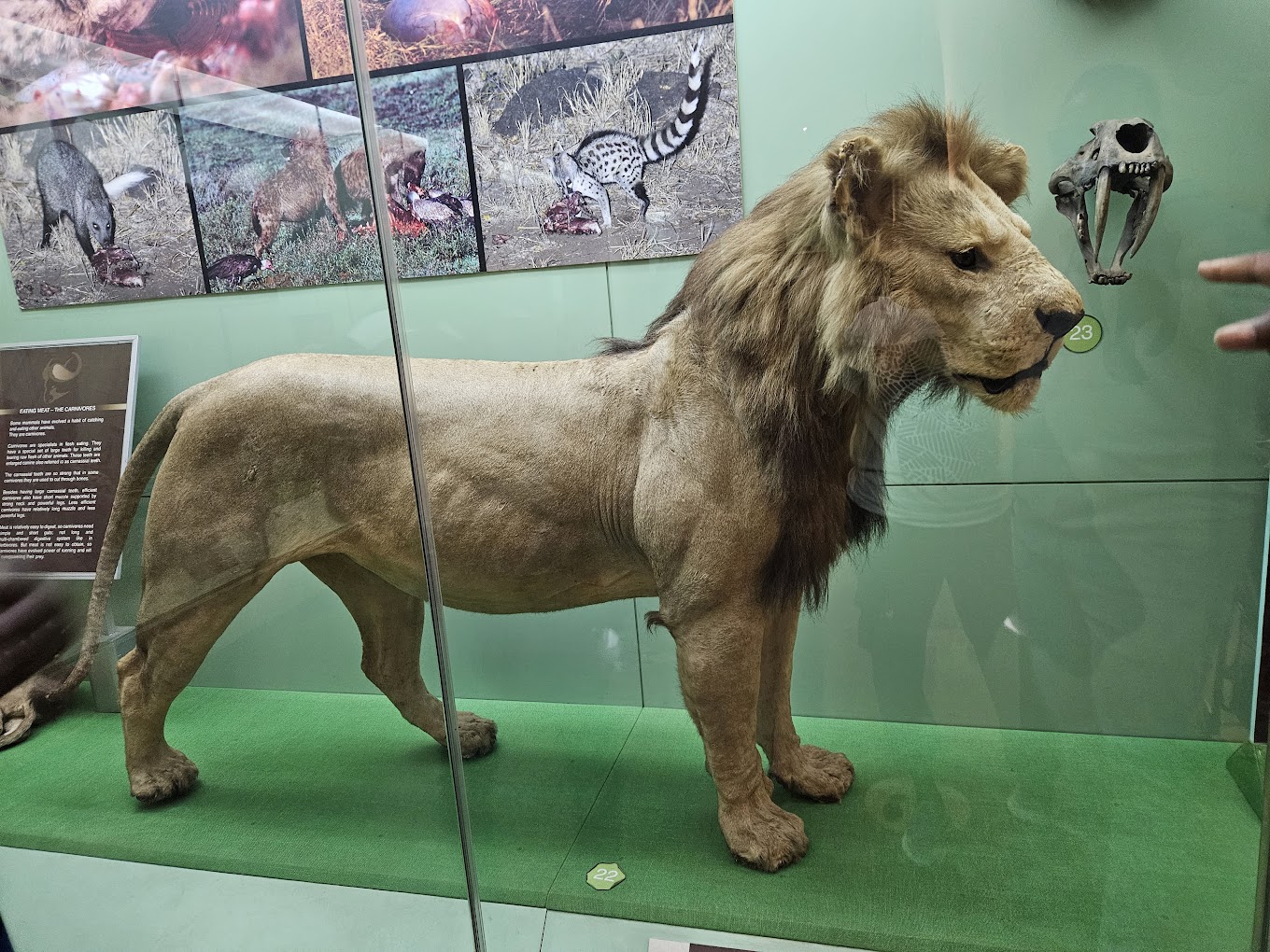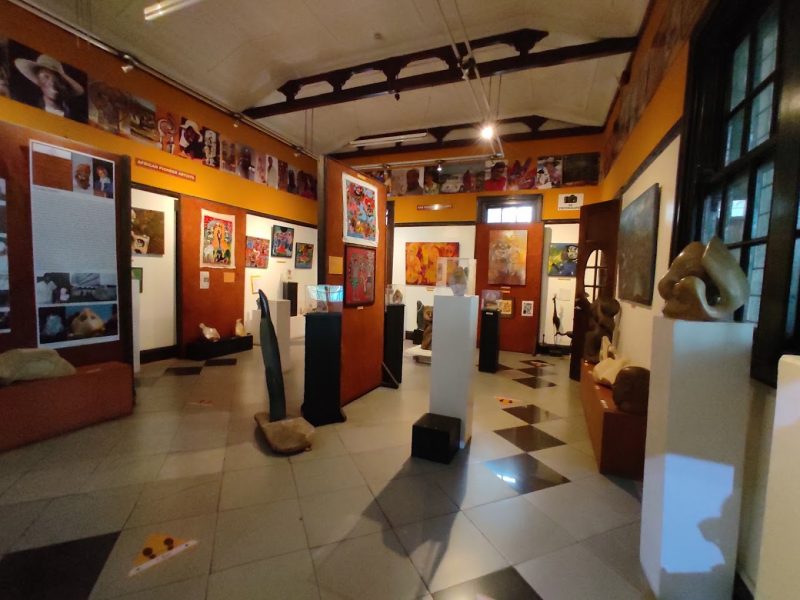Travel Down The Memory Lane Visiting The Museums Of Kenya
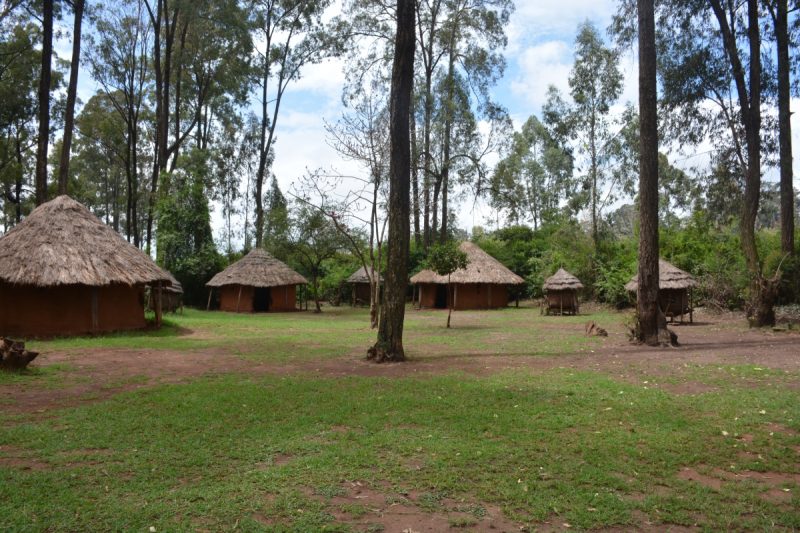 1) Bomas of Kenya
1) Bomas of Kenya
Bomas of Kenya is Kenya in miniature. Therefore, it is a very tourist attraction. For foreigners, Bomas of Kenya are traditional villages and mud huts each representing the communities. But for residents, it is an afternoon out. In 2003, the Bomas of Kenya hosted the 1st constitutional meeting. After that, it produced the Bomas draft of the constitution making it a high-profile site. Bomas of Kenya is 10km from the city centre of Nairobi, and about 1km from the main gate of Nairobi park. In short, it is a centre at a small village in Langata.
Establishment
Bomas of Kenya was established in 1971 as a tourist spot. But most importantly, it is a company of Kenya tourist development corporation. Therefore, its mission is to preserve ancient values and traditions of the tribal groups. Also, its sole purpose is to safeguard the social and cultural values of the tribes of Kenya.
Homesteads
The word Boma is a Swahili word meaning enclosed homesteads. So Bomas of Kenya means homesteads of Kenya’s major ethnic groups and tribes. It showcases the country’s traditional houses. That is to say, they are the original architecture of local tribes. Hence, the experience is truly genuine. The houses at Bomas are set out in clusters based on each region. In addition, granaries and livestock corners are standard features of some homesteads. To the casual visitor, they may seem banal. But it shows the challenges each tribal dwelling was designed to address. There is a lot of variety between the huts. In other words, different building items shed light on the hierarchy of the different tribes.
Tribes
Bomas of Kenya is a tour of Kenya’s tribes in one place. The tribes are Luo, Mijikenda, Taita, Embu, Kikuyu, Maasai, Kamba, Kalenjin, Kisii, Luhya and Kuria. Further, each Boma represents a tribe. Moreover, it lets you see the cultures that make up Kenya and its impact on their daily lives. As a result, replicas of villages provide an insight into the tribe’s culture.
Dances
There are performances at Bomas of Kenya belonging to different tribes. For example, Kalenjin dances, Arab- Swahili music, Kikuyu ceremonies and Embu drumming. Also, daily performances include a choice of 30 tribal dances of Kenya. Above all, these tribal dancers perform in a vibrant hue and rhythm.
Shows
Visitors enjoy acrobatic and gymnastic shows. However, the most impressive performance is of the Maasai and Samburu warriors. Also, the proud warriors vault skywards to woo their maidens with twirling spears and chanting cries. Therefore, the quality rivals those performed in upmarket hotels in Kenya. In addition, the Harambee dancers often perform here. So, this is the high point for most visitors.
Kid zone
For young children, Bomas of Kenya has a wooden area and a park. In other words, it is an ideal place to bring kids as they are free to roam around in the mud huts and climb the ladders. Also, children have an active time at the Bomas.
Other activities
Bomas of Kenya provide brilliant Kenyan cuisines. Furthermore, dishes served are tastes of the country’s culture. There are also sports including darts, volleyball, football, soccer, tug of war, table tennis and scrabble. As a result, over a period of decades, Bomas of Kenya has evolved into a meeting point. Also, it offers conference rooms that can hold up to 3,500 guests at a time. In addition, it has 3 rooms that are suitable for holding shows, AGMs, weddings and award duos. Further, the auditorium has wooden floors and can be used as a podium for VIPs or as a ballroom. Hosted events may also include fashion shows and poetry readings. There are also accommodation and craft shops. Above all, all proceeds go towards the upkeep of Bomas of Kenya.
Timings
Bomas of Kenya is a must-see. Certainly, there are schedule times put in place to highlight the precious values of the country. Also, performers showcase acts from distant forgotten past. Moreover, the shows are from 2.30pm to 4.00pm on weekdays and from 3.30pm to 5.15pm on weekends. In addition, by night, it has concerts for the urbane music lovers with a palate for modern genres. There’s an extra charge to be paid for those who bring a video camera.
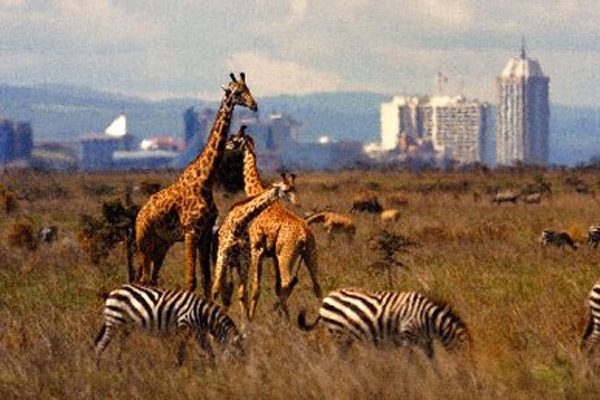
Travel down the memory lane visiting the museums of Kenya
2) Nairobi national park
Nairobi national park was the 1st game reserve in Kenya. It is the only secured wildlife park in the world edging very close to a capital city. The park is 6 miles from Nairobi. Set on the southern outskirts of Nairobi, it has 117sq.km of pristine grasslands, forests, wetlands and rocky valleys. The park offers the country’s most genuine safari experience. This sunny green park is a real contrast to the buzz of the city. What makes Nairobi park unique when compared with other parks is that wild animals can be seen grazing quietly against a backdrop of skyscrapers and landing planes. There are not many places on earth that put visitors so close to wildlife in such an urban setting. And no other place offers a photographer a chance to capture the wildlife in its own habitat against a city skyline. Staying at Nairobi park is an experience par excellence.
Climate
Nairobi park is 5,030 feet above sea level. Therefore, temperatures are mild year-round. The near-perfect weather makes it a year-round fun place. December through March are warm and spring-like months of the year. Avoid April to June as heavy rains can disrupt safari plans because spotting wildlife becomes very challenging. Therefore, tracking animals takes more time during rainy season. It may also affect road safety. Moreover, it is hottest at that time of the year. But during this period, it is a spectacle to see the landscape dominated by yellow daisies. July and August are the coolest months. September and October are hot months with no rains. Hence, there is plenty of wildlife. November has a rainfall with about 4 inches.
Wildlife
Despite being close to the city, the animals in Nairobi park seems not bothered by the modernity. It is host to lions, leopards, cheetahs, buffaloes, giraffes, hyenas and rhinos. Rangers have updates on lion movements. Spotting cheetahs and leopards needs a bit of patience. Other spotted animals include baboons, zebras, gazelles, warthogs and ostriches.
Migration
Nairobi park is home to migratory wildlife as the border allows for wildlife migration during the rains. The park has both boundaries. All edges have fences except the southern end. This is an open space used by animals when new water sources develop outside the park.
Rhino sanctuary
Nairobi park has a major rhino centre for breeding and restocking. It is home to the world’s highest number of black rhinos. Because of the success of this shelter, it got the nickname Kifaru ark.
Anti-poaching
In 1989, the then President of Kenya, Daniel Arap Moi, burnt and destroyed 60 tons of confiscated ivory. This was because poaching had reduced the rhino numbers leading to high price for their horns. This event improved the country’s image. Since then the park has put in place strong anti-poaching measures. Today, an ivory burning monument marks this spot. It is an important part of the tour activities in Nairobi park.
Birds
Nairobi park is a birder’s paradise. The park’s wetland areas sustain about 400 species of birds. The birdlife is more than the whole of UK’s birdlife put together. At least 20 of them are seasonal migrants.
Bushwalk
Hikers can enjoy walking trails in the 3 campsites at Nairobi park. The Athi river in the south is a place for bush-walks through a forest filled with monkeys, birds and hippos. At the southwestern border, small streams have carved steep valleys. It is a visual treat to witness hyrax and mountain reedbuck.
Transport
Nairobi park is a short drive from downtown. Local travel agents offer half-day safaris to this park. The gates of the entrance are Langata entrance, Magadi entrance and Athi river entrance. Before entering the park, visitors have to get a card which is available at Langata entrance gate. The cheapest way to get to the park is by park shuttle. It leaves the main entrance at 1.30pm. Inside the parks, you can use 2WDs. But if the rains have been heavy, it is best to travel in a 4WD.
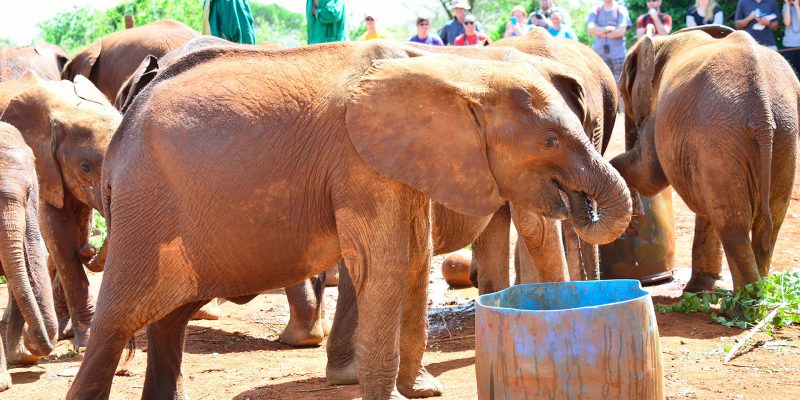
Travel down the memory lane visiting the museums of Kenya
3) Sheldrick elephant orphanage
Daphne Sheldrick was born on the 4th of June 1934 in Kenya. She grew up amongst animals. She went to school in Kenya where she matriculated with honours in 1950. For 25 years Daphne Sheldrick worked alongside her husband David William Sheldrick MBE. He was the founding warden of Tsavo park where he served from 1948 to 1976. There he played a major role in ivory poaching wars. During this time, both Daphne and David looked after several wild animals. She had an in-depth knowledge of wildlife. And she had a sincere and profound empathy. Sadly, David Sheldrick passed away in 1977, but his legacy in the sphere of wildlife lives on. Ever since her husband died, Daphne and her family had lived in Nairobi park.
Brief profile of Daphne Sheldrick
Daphne Sheldrick has written an autobiography, 4 books and numerous articles. Also she has lectured and appeared in TV. Through these works, Daphne Sheldrick has promoted wildlife conservation worldwide. She was a well-known figure on the rearing of many wild creatures. She was also the 1st person to perfect the milk formula for infant rhinos and elephants. Daphne appears in the the BBC documentary, Elephant diaries, portraying her work with the orphaned elephants. She also appeared in the movie Born to be wild. Both of these got worldwide acclaim. In the film A homage to Tsavo, Dr. Sheldrick takes us on a journey of Tsavo making us fall in love with the place.
Accolades
Daphne was decorated in 1989 by the Queen with an MBE for her work in animal husbandry. In June 2000, she got an honorary doctorate by Glasgow university in veterinary medicine and surgery. In December 2001, Daphne received the Moran of the burning spear from Kenya. And in 2002, she received the lifetime award by BBC. The Smithsonian magazine in Nov 2005 named her as one who made a difference in the world of wildlife. In 2006, Daphne got the 1st knighthood in Kenya.
David Sheldrick wildlife trust
Soon after David’s death in 1977, Dr. Dame Daphne Sheldrick founded Sheldrick trust. It was in memory of her late husband that became an elephant orphanage. It claims a rich family history in wildlife. Sheldrick trust was born from this family’s passion. It has become the centre for information on elephants. Till date, the trust has remained faithful to its ideals. In 2004, the trust attained charitable status in the UK and US enhancing its funding capability. Today it is a global force for wildlife.
Rehabilitation
Through the Orphans project, the Sheldrick wildlife trust saves the lives of orphaned elephants. Calves who are orphaned are brought here from all over Kenya. They receive treatment and personal care. After that, they are released back into the wild. But even after they live in the wild, they keep coming back to show off their newborns.
Orphanage
Sheldrick orphanage is a 45-minute drive from the city of Nairobi. It is inside Nairobi park. A team takes care of orphaned baby elephants. The donation fee is Shs. 500/-. Visits to the centre are allowed for an hour from 11am to 12pm. That’s when they bring the youngest inmates to an area for their daily mud bath. They also bottle-feed the hungry infants here. You are free to watch, get close or even touch them but are not allowed to feed them. The keepers tell stories about how they are faring and how the former orphans are. The proceeds from sale shop goes to support the work.
Adoption
You are allowed to adopt elephants for a fee of $50/- a year. They will give you an adoption document as well as up to date status of the adoptee on an ongoing basis. The private session between 3pm to 4pm needs booking which allows you some private time with your adoptees. You can also visit the sleepy elephants going to bed.
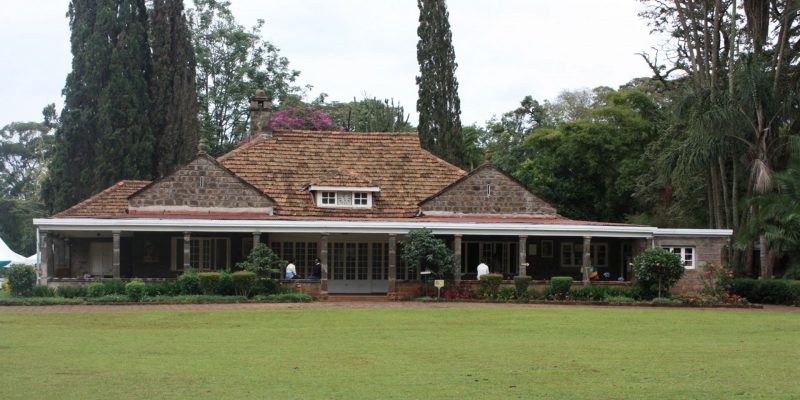
Travel down the memory lane visiting the museums of Kenya
4) Karen Blixen museum
Karen Blixen Museum was the site of the farmhouse of Karen Blixen, the Danish author. The world best knows her as the author of Out of Africa. It is half a mile from Karen club where guests can enjoy squash, tennis and golfing.
Karen Blixen
Karen Blixen was born on the 17th of April 1883 into a royal family in Rungsted in Denmark. She studied art in Copenhagen, Rome and Paris. She began publishing short stories in Danish periodicals in 1905 using her pseudonym Osceola.
Connection to Kenya
In 1914, Karen Blixen married Baron Bror von Blixen-Finecke. Prior to that she had a failed romance with his twin brother, the famous horseman Hans von Blixen-Finecke. Thereby Karen got the title Baroness. They were her Swedish second-cousins. After the marriage, the couple moved to Kenya. With funds given by their families, they ran a coffee estate in Nairobi.
Life after marriage
During the 1st year of marriage, Karen got syphilis, which caused problems. The treatment of this dreadful disease would plague her for the rest of her life. Bror, her husband, was often away for long periods on campaigns or safaris. The couple divorced in 1925.
Life continued
After the divorce, Karen Blixen stayed on in Nairobi where she ran the coffee estate. It went through many misfortunes. Karen then fell in love with the safari hunter Denys Finch Hatton, son of a titled English clan. It was ended in 1931 when he died in a plane crash. But the writer Beryl Markham claimed that Hatton was gay.
Writing career
After losing the coffee estate and soon after Hatton’s death, Karen returned to her country manor in Denmark. She started a writing career, publishing in 1934 the Seven gothic tales in English under her pen name Isak Dinesen. She was unable to find a publisher in England or Denmark. So it was published by Random house in the US. It was her debut. This book brought her to fame for the 1st time.
Out of Africa
In 1938, Karen Blixen’s most famous book Out of Africa was published. It was her memoir. The prose of this book displayed a unique writing from her 1st book. It looked back upon her life as a settler in Kenya. It narrates her life on a farm with deaths and drought as well as friendships. The memoir has oblique hints to her love story with Denys Finch Hatton. Out of Africa gained her worldwide fame and sealed her as an author. Today she is best known for this book for which she received the Tagea Brandt Rejselegat in 1939. It was Denmark’s highest honour in the artistic life for women. Her readers were shocked to learn that the author was a woman and not a man as her pen name sounded. They also came to know that her real name was Karen Blixen. In 1985, a movie by the same name was released. Meryl Streep played Karen, and Robert Redford portrayed her hunter lover Denys.
Further works
When Nazis fought with Denmark during World War II, Blixen started to write her full-length novel. The angelic avengers, under the pseudonym Pierre Andrezel was published in 1944. The book is an allegory of Nazism because it depicts the horrors by young women during the war. Throughout the 1940s, she wrote many books such as An immortal story, Babette’s feast and Winter’s tales. An immortal story is about a senior man who tried to buy youth, and in 1968 it became a movie. Babette’s feast was adapted into a motion picture too. It is the story of how an elderly cook was able to show her skills. As for Winter’s tales, they had to smuggle it out of the country through Sweden. The stories stress the philosophy of identity and underline our fate in our lives. Her tales were like prose poems, violent events, cases of mistaken identity and had unexpected endings. Each story took place in another era but offered a flavour. Despite being Danish, Karen wrote her books in English and then translated them into her Danish. Although Denmark formed her voice, a variety of works influenced her. Blixen’s health started getting worse throughout the 1950s, and writing became tough. She then started doing many radio broadcasts.
US fame
In 1959 Karen went on a US tour where she met Pearl Buck, Arthur Miller and E.E Cummings. They admired her writing skills. It was an era that loved short stories, and they appeared in magazines. The Bible, Aesop’s fables, Homer and The fairy tales of Hans Christian Andersen, mostly influenced her writing. The book of the month club issued her books.
Nobel prize
In 1954 and 1957, Karen Blixen was nominated for Nobel prize but failed to win them. Some claim that this was because many people disliked her. Ernest Hemingway once said that she should have won the prize in 1954 instead of himself.
Posthumous
In 1962, Karen Blixen died at the age of 77 in Rungsted, her family’s estate. Many countries still publish her books after her death. The house in Kenya where she lived is now a coffeehouse and a museum.
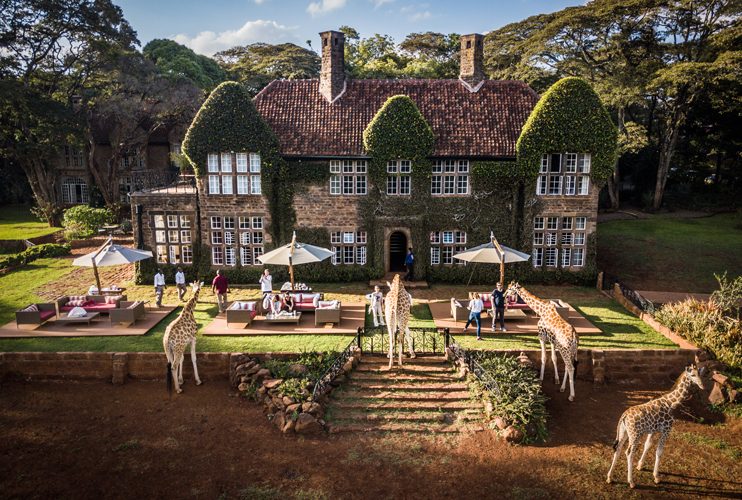
Travel down the memory lane visiting the museums of Kenya
5) Giraffe manor
Giraffe manor is a boutique hotel reminding us of the early European days in Kenya. In many ways, this small hotel still proudly keeps up the bygone era. It is a 12-acre private land in a 140-acre forest in the leafy suburbs of Langata in Nairobi. The manor offers an experience within easy reach of the city’s attractions. This stylish site is an iconic building of Kenya. Sited 10km outside city centre, it is a place to stay.
Building
Sir David Duncan built giraffe manor in 1932 modeled after a Scottish sporting lodge. The manor still maintains the style, keeping up the bygone era. It is both urbane and upcountry in feel, a style of the expat community of the 1930s. Giraffe manor’s physical surroundings are quite formal, But the informality of management style places the needs of the guests at the top of the agenda.
Founders
Betty and Josh Leslie-Melville who founded giraffe manor bought it in 1974. They converted it into a home where dozens of Rothschild giraffes are reared. The giraffes live in a private area within the grounds of this manor. When the young calves reach the age of 2, they are released into the wild.
Hotel
Giraffe manor has been running as a country house hotel since 1984. The hotel’s appeal is due to its stately façade, verdant green gardens, sunny terraces and charming courtyards. It feels like walking right into the famous film Out of Africa. The movie is based on Karen Blixen, the Danish author of the book by the same name. Items once owned by Karen are used to furnish the 2 huge rooms that have 4-poster beds. The hotel comprises of a garden manor which is an annex built in 2011. It stays close and similar in details to the main house. The manor has 10 luxury ensuite bedrooms designed with early 20th century decor. It’s frayed softer decor add to the hotel’s charm. The hallway and grand wooden staircase greet people on arrival. Bathrooms are more modern in style with walk-in rainfall showers and stained-glass windows. A mix of sofas, armchairs, tables and artworks are used to furnish the spacious lounge.
Meals
Hearty breakfasts, light lunches and gourmet dinners are served in the dining room at giraffe manor. There is also a courtyard which is the usual place for guests wanting to have private dinners. Evenings are kick started with cocktails.
Giraffes
Giraffe manor plays host to a herd of giraffes in its patch of land and offers a chance to meet them. The giraffes belong to a subspecies called Rothschild giraffes. For many years they were a favored target of hunters and poachers. Hence they were brought them on the brink of extinction. Giraffes wander around here as they please. Although still wild, the giraffes at the manor have become used to seeing people. Hence, they are semi-tamed. You will enjoy meeting with these friendly giraffes. Close meetings with them create an fun memory for guests. The giraffes visit the manor in the mornings and early evenings to greet the guests. They are found during breakfast time checking out what’s on the plates or at the room windows. In the hope of a treat, they stick out their long necks into the windows. People always find it amusing to hand-feed these long-necked beauties. Guests often remark that this is the most fun thing about giraffe manor. After wandering around the manor, they retreat to the forest to spend the rest of their day.
Conservation efforts
There is a Rothschild giraffe breeding program to introduce these subspecies back into Kenya’s wild areas. With these projects, the animals have bounced back. Those who have contributed to the African fund charity for wildlife have a chance to name the giraffes after them. The charity is a world leader in dealing with wild giraffes.
Other activities
You can enjoy walks inside the vast acres of forest, visits to Karen Blixen and to the elephant orphanage. You can also indulge yourself with a massage. There are gyms for workouts. The giraffe manor, a peaceful retreat and an icon of Nairobi, attracts plaudits from around the world. A stay at the manor is an ideal way to start or end a wildlife safari in Kenya.
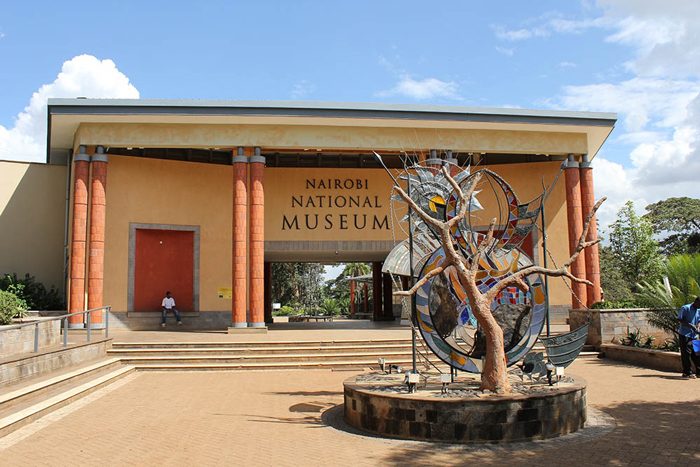
Travel down the memory lane visiting the museums of Kenya
6) Museum of Nairobi
In 1910, some naturalists and colonial settlers started Nairobi museum, as we know it today, to keep their various specimens. The 1st site was Nyayo house that soon became too small. Hence a bigger building was built in 1922 which is today the Serena hotel. In 1929, the then government set aside land for a museum. The 22nd day of September 1930 saw the opening of the museum. In honor of the former governor of Kenya, Sir Robert Coryndon, it was named Coryndon museum. Coryndon was an ardent supporter of Uganda history society. But it was renamed after independence in 1963 as National museum of Kenya.
In modern times
During the 1990s, the museum received funding from European union to finance the much-needed change. But it was not until the 15th Oct 2005 that it closed its door for a modernisation project. It was re-opened as Nairobi national museum in June 2008. The outcome was an impressive piece that puts it on par with other world-class museums. It is a building amid green, lush grounds with a collection of historical exhibits. Ever since then, Nairobi national museum has expanded its services. It has become a centre for research in the areas of palaeontology, biodiversity and conservation. Also, visitors enjoy a myriad of shopping and dining facilities. It is known as a venue for events such as workshops, cocktails, corporate functions and product launches. It also conducts short-term courses in the promotion of both natural and cultural heritage. Today, it is the flagship museum in Kenya. It is open all year long and is in Museum hill which is about 10-min drive or a 15-minute walk from the city centre. The entry fee for citizens is Kshs.100/- and for foreigners Kshs. 1,200/-. It continues to draw people from all over the world.
Features
Nairobi national museum aims to offer a perfect 1-stop to sample Kenya’s rich heritage. It houses collections of the 4 pillars of the country’s heritage i.e. nature, history, culture and art. The 4 pillars are seen in its entire splendour even in the landscaping. Among them is a life-sized fibreglass model of the elephant Ahmed who stands for anti-poaching in the 1980s. As a result, Jomo Kenyatta, the 1st president of Kenya, placed it under round-the-clock guard. Its trunk is as long as the tallest human being. The birds of east Africa are off the hall of Kenya. Then there is the great hall of stuffed mammals. The cradle of humankind is off the animals’ room. Hominid skull room is said to be the single most collection of earliest human fossils. Kenya has contributed to the theory of evolution through fossilised human remains. The staircase has photographs hanging from the ceiling. The photographs capture Kenya’s history. The Historia ya Kenya display which is upstairs is a journey through east African and Kenyan history. It is well-presented and offers a Kenyan counterpoint to colonial historiographies. Also, the cycle of life room is full of artefacts from the country’s various tribes and ethnic groups.
Snake park at the museum
The snake park which is within the grounds of Nairobi national museum was opened in January 1961 to provide a facility for research on reptiles, breeding of snakes and a shelter for rescued reptiles. It remains hugely popular with the public, researchers, educators and conservationists. Snake park also assists the city residents of Nairobi by giving advice on how to reduce snakebites within their homesteads. The facility has now turned into a world-class tourist destination with several nature trails as well as picnic and educational sites. These sites provide a rich bird and fauna life too.
Louis Leakey auditorium
In 1977, the Louis Leakey auditorium was opened to honor the life of Louis Seymour Leakey who enhanced our understanding of human origins through his works in east Africa. The auditorium underwent a major rehabilitation in 2008 through a project funded by Safaricom foundation and spearheaded by Kenya museum society. It resulted in an outstanding facility with the best acoustics that has become a favorite for performing artists.
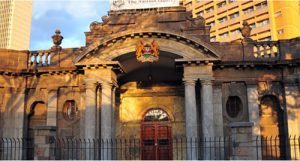
Travel down the memory lane visiting the museums of Kenya
7) Nairobi gallery
In the heart of the beautiful and buzzing city of Nairobi in Kenya, there sits unobtrusively a historical site that hardly anyone notices. It may seem like a decrepit and dilapidated old building. Just the look of the building can deter anyone from entering it. But the building talks volumes about the shaping of Kenyan history and culture. The building is none other than Nairobi gallery. It sits beneath Nyayo house tower at the intersection of Kenyatta avenue and Uhuru highway. The gallery is unique in its historical significance and connection to Nairobi’s history. It continues to contribute to the country’s cultural development. It is part of the historical tour of the city of Nairobi. The building is a national monument hosting numerous exhibitions of works by both foreign and local artists. Few buildings in Nairobi can match it. The formidable structure of the building is most certainly an undervalued piece of Kenyan history and culture.
African art and history
Nairobi gallery serves as an art and history gallery under the auspices of the museums of Kenya. It is an inspiring national monument which features art not only from Kenya but also from East Africa and the continent at large. The collection showcases ancient paintings, sculptures and artifacts of daily use from African cultures. It highlights the creativity and organization of these cultures. It also shows the evolution of the cultures as they came into contact with different civilizations such as Asian, Middle Eastern and European over the course of history.
Point zero
The year 1913 saw the construction of the building in the center of Nairobi that today houses Nairobi gallery. The location was known as point zero because it was a point from where distances to all areas of the country were measured. Point zero is an octagonal atrium in the center of the gallery. A clay vessel by Lady Magdalene Odundo graces the entrance of the building. Lady Odundo was a renowned Kenyan ceramist. For her works, she received from Queen of England the distinction of OBE and the only Kenyan to have received it. Today a gourmet café by the same name is an exciting item of this gallery.
Births, marriages and deaths renamed
Nairobi gallery building originally used to serve as the office of the colonial government where births, marriages and deaths were recorded. Hence the white settler community fondly nicknamed it as hatches, matches and dispatches. Two of the rooms in the gallery have 2 old safes for storing these documents recorded there. The gallery treats the visitors with a rare glimpse into the past colonial history of the country dating back more than a century. The doors, windows and beams in the ceiling are of wooden frames reflecting the flavor, aura and ambiance of the early white European settlers.
Douglas Galton-Fenzi memorial monument
In 1939, a memorial monument of Douglas Galton-Fenzi known as Galton-Fenzi memorial, also called Nairobi military stone, was erected at Nairobi gallery. It was an attempt by the colonial government to make point zero in his honor. Douglas Galton-Fenzi was an automobile enthusiast and an adventurer. His driving passion made him the 1st person to drive between Nairobi and Mombasa. Douglas is also credited to be the founder of east Africa’s 1st automobile association in 1919. His monument could not fit in the gallery atrium. Hence, they placed it a few meters away beside the GPO building.
Joseph Zuzarte Murumbi
A history of Nairobi gallery is incomplete without mentioning the name Joseph Zuzarte Murumbi. He was the 2nd Vice President of Kenya after its independence between May 1965 and December 1966. He was a key player in shaping the history of Kenya. Joseph Murumbi was born to a Maasai woman and a Goan businessman in 1911. The independence hero Pio Gama Pinto was his best friend. Shortly after Pinto’s assassination, Murumbi resigned as vice president. Having started a collection of African art in the early 1950s, he turned his attention to growing the collection of artifacts, jewelry, stamps and books. Joseph Murumbi, along with his wife, Sheila Murumbi, opened Africa’s 1st Pan African gallery in 1972 with Alan Donovan who was his business partner. In 1976 he sold a huge part of the collection to Kenya government at throwaway prices. He passed away in 1990 and his wife in 2000. Since they died without leaving a will, the government had planned to send the collection to England. But Alan Donovan managed to halt the exportation of Murumbi’s precious artifacts. Eventually, Kenya national archives and the national museums of Kenya signed a deed to exhibit the collections for visitors to enjoy.
Murumbi African heritage collection
In June 2013, the establishment moved part of Murumbi African heritage collection to Nairobi gallery from Kenya national archives. It soon became the centerpiece of the works exhibited at the gallery. Since then the gallery has become its official home. It now houses the famous Murumbi African heritage collection, an outstanding private collection amassed by Joseph Murumbi. Artifacts from personal life of Joseph and Sheila Murumbi are also on display in the gallery. Coincidentally during Murumbi’s time as Foreign minister, he tried to make the same building a national art gallery. Hence it is a suitable site.
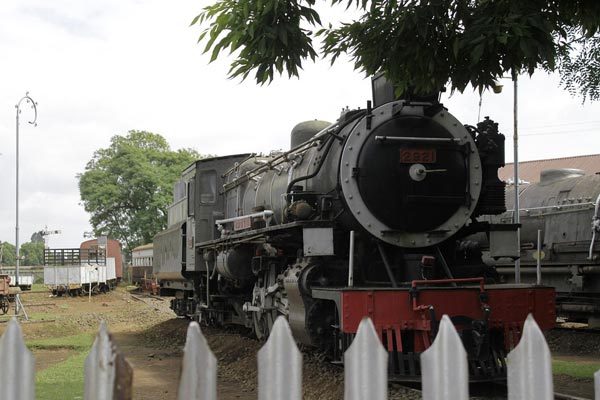
Travel down the memory lane visiting the museums of Kenya
8) Nairobi railway museum
Nairobi railway museum is a fascinating introduction to an important piece of the colonial history of Kenya. It narrates the tale of the railway construction through the whole stretch of the period from the annexation of the country as a British protectorate to the freedom struggle and independence. The undertaking led to the creation of Nairobi. The museum is on Station road at Nairobi railway station’s northwest end near the Technical university of Kenya that crosses the main line at Uhuru highway. East African railways and harbors corporation established the railway museum. It opened in 1971 to preserve the relics of the railways of east Africa. It serves as a learning center on the rail travel history of east Africa. Much of the credit goes to Fred Jordon. He had been with the railways since 1927. Realizing the changes that were taking place, he saw the need to preserve the links to the past that represented the historical growth of Kenya. He began to gather items that narrated the tale of the country’s evolution. They formed the nucleus of the museum’s fascinating collection.
Lunatic express
The 1st railway line of Kenya, Lunatic express, was in the port of Mombasa in East Africa. It was an unassuming 2-feet gauge trolley line operated by hand propelled wagons. Track recovered from Central African railway supplemented the original route which had reached 11km from Mombasa island. The railroad was officially called Uganda railway. This £5.5 million project was 931km long.
Lions
After leaving Mombasa, the Lunatic express had to cross Taru plain, a painfully slow job because water had to be taken by train from Mombasa to the construction camps. Moreover, the construction was held up by 2 human-eating lions. They killed several workers before being hunted down and shot by Lt. Colonel J.H Patterson. Col. Patterson describes his experiences with these lions in his book called Man-Eaters of Tsavo. In 1996, the movie The ghost and the darkness dramatized the account. The stuffed carcasses of these lions are now on display at Chicago field museum. As a grim reminder, a small plastic box at Nairobi railway museum contains 3 claws clipped from 1 of the pair of lions that terrorized the workers. The railway line eventually reached Tsavo river in 1898.
Kenya highlands
By 1899, Lunatic express arrived at Kenya highlands. The colonial government established a major depot here. They also moved the administrative offices here and built homes for the staff. It attracted an influx of merchants from Asia to supply goods to the railway workforce. Between Nairobi and Lake Victoria is rift valley with its steep drop to the floor of the valley. To speed up construction, an inclined railway was erected down the sides of the valley. In 1901, the railhead finally reached Port Florence in Lake Victoria. They later renamed it Kisumu. The line eventually reached Moshi in 1912.
Uganda railway
Uganda railway was constructed to meter gauge as it was already in use in India. There was also a ready source of rolling stock and locomotives. Most of the labor, unskilled and skilled, came from India. Many of them remained after their contracts ended. It became the basis of the Asian community in Uganda and Kenya.
Tazara line
The last line was the Chinese-funded Tazara line to Tunduma on the border of Zambia. It gave Zambia an outlet for its exports after its independence. With that, the railway line came to a full completion in 1976.
Exhibits
Railway museum consists of the resource center, the main gallery and the auditorium. The outdoor yard has a collection of rolling stock, steam engine locomotives, wagons, coaches and ship models in various stages of disrepair. The mountain class, the most powerful meter-gauge locomotive at that time, weighs 254 ton. The steam train No. 301 that operated between 1923 and 1971 is at the back of the compound. Hollywood used in the epic movie named Out of Africa, which starred Robert Redford and Meryl Streep. The movie won 7 Academy awards. The main collection is the numerous records and artifacts of the railway dating from their inception till independence. On display are also relics such as tableware and oddities from east African railway. The old railway museum building houses smaller exhibits of occurrences such as an old-fashioned telephone receiver, tortoise calculator, officer’s bicycle and manual typewriter. Sepia-colored framed photographs of milestones such as pictures of turbaned Indian laborers laying the rail line and demonstrating their entrepreneurial genius along the way adorn the walls of the museum.
Preserved history
After the privatization of Kenya railways, the national museum of Kenya took custody of railway museum and its exhibits. Nairobi railway museum is a place that seems almost haunted where time has stood still for decades. It serves as an ugly reminder of the history of Kenya railways. Every year it receives around 7,000 visitors, mostly foreigners.
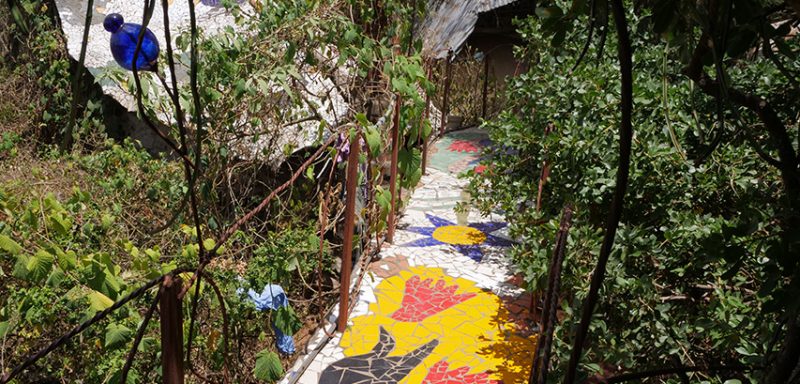
Travel down the memory lane visiting the museums of Kenya
9) Kitengela
Nani Croze founded Kitengela glass company in 1981 and Anselm Croze, her son, owns Kitengela hot glass company. They are 2 separate ventures sharing the same grounds. They have different galleries, furnaces and workshops. It is a hidden gem and a treasure trove situated at the end of the road opposite Nairobi national park on the cusp of Kiserian ridge. It is on a dry spot of the plains south of Nairobi. The constant stream of visitors never stops. The unique and beautiful pool on the ridge of the gorge looks like a Loch Ness monster swimming in it. You can see it from the airplane when it approaches Nairobi’s airport.
Nani Croze
In the 1970s the family of Nani Croze, owner of Kitengela glass, visited Athi-Kapiti Maasai land for a picnic. The family loved the natural beauty so much that they decided to move there, and in 1979 Nani started the stained-glass studio. Nani was the daughter of artist parents. Her father was a famous woodcut artist in Germany. Nani is a muralist. Her works are all over Kenya, including large murals in hotels, hospitals, ministries, banks and office buildings. Over the last 25 years, it has evolved into a group of studios. The technique of stained glass, glass blowing, fusing, Dale de Verre, slumping, mosaic, Ferro-cement sculpture, wrought iron, pottery, beading and woodwork shows immense versatility.
Ambiance
The stark contrast between the enchanting fantasy world at Kitengela and the surrounding area is astounding. A myriad of mosaic animals dots the grounds leading to the main entrance. Also, the wildly entertaining and rough road to Kitengela glass is a magical place with giant misshapen statutes. Upon arrival at the gate, you can feel the magic by following the furnaces, red rooftops, psychedelic buildings and domestic animals grazing or roaming around. Mosaic artwork made using glass, bottle tops and ceramic tiles fills the galleries. Other articles include ornamented mirror frames, magnificently colorful chandeliers, misshapen bottles, delicate beadworks, glass wind bells, lamp shades, household glassware and innumerable other items. There are secret mosaic pathways that lead to niches of busy artisans who transform recycled glass, scrap materials and an assortment of other metals into beautiful artworks. They even reuse the smallest shards such as empty bottles, its caps and broken tableware. The famous Maasai beadwork comes from Kitengela glass. Bead shower curtains are very attractive and keep out mosquitoes.
Staff
Kitengela glass helps people make a living through their talent and artistic abilities. They work in the studios as caretakers, guards, cooks and housekeepers. They receive on-going training and employment. Many of them live in the area in different cottages and houses. It is like a tiny village community.
Corporate social responsibility
Nani and her husband Eric are ardent supporters of access to education for everyone. They have been funding grant programs for school fees and providing guidance for adults in need of academic training. They maintain the landscape by planting trees, limiting wastage and promoting renewable energy sources. Moreover, they passionately care about the local community who benefit from the expertise and income that the enterprise has brought to their lives.
Recreation activities
Kitengela glass has recreation activities such as horse-riding classes, swimming, felting and glass mosaic classes to brighten up the weekend. It also offers quiet time from the buzz of the city life. Every Saturday morning there is a glass blowing show and a visit to other workshops. There is a mosaic-pathway that reaches a swaying suspense bridge. It is above a valley, which links Kitengela to Silole sanctuary. Crossing this bridge may only appeal to those with an adventurous spirit. Across the bridge is Maasai lodge that serves drinks, meals and offers other amenities.
Kitengela hot glass company
Nani’s son Anselm Croze owns Kitengela hot glass company. For his creations, people call him the dream merchant. Kitengela hot glass offers commercial hand-blown glassware. The red-brick dome is the heart and core of Anselm’s studio. The dome has around 1,000 stars made of glass inserted into the ceiling that feels like a planetarium. A skilled team of artisans at Kitengela hot glass makes hundreds of objects designed by Anselm. Artworks include individual as well as entire collections custom-designed for hotels, restaurants, camps, lodges and other corporate clients throughout east Africa. Some of their prestigious clients include Fairmont, Tamarind, Carnivore, Sarova, Serena, Cheli & Peacock, Safari park hotel, Abercrombie & Kent, Hilton, Hotel Intercontinental, &Beyond, Kempinsky, Ole Sereni, Sankara, Crowne plaza, Peponi hotel, Asilia lodges and Sheraton. Interestingly, the restaurant at Maasai lodge across the bridge from Kitengela glass also features Anselm’s chandelier as its centerpiece. Using discarded items, they make stoves and lamps from old cans as well as shoes from tires.
Kitengela glass research and training center
Anyone who wants to learn about glass blowing, mosaic tiling, stained glass- or sculpture-making can take a course offered at the Kitengela glass research and training centre. Classes suit the needs and level of expertise of the participants. The centre has 5 beautiful rooms. People use them that when attending the courses. Sometimes groups of friends looking for a weekend getaway occupy them. Kitengela training center is a fun place for anyone who has an interest in art and design. It creates quirky one-off pieces using recycled materials to create an array of unique objects. On entering the premises, you can see large sculptures that are 20 feet tall dominating the landscape. Mosaic sculptures litter the environment. The center is a beautiful place full of various art studios, showrooms, a workshop with an enormous brick furnace and odd shaped buildings with low ceilings. The houses have undulating walls, mosaic cladding and stained-glass windows.
Getting there
From Uhuru highway turn right onto Langata road. Drive till Bomas of Kenya and then turn left onto Magadi road. Before getting to Ongata Rongai, take the left turn onto the Africa Nazarene university road. Tarmac surface ends at the university and turns into a rough, bumpy ride across shrubby terrain but with a panoramic view of Nairobi cityscape across the national park. Follow the Kitengela glass signs.
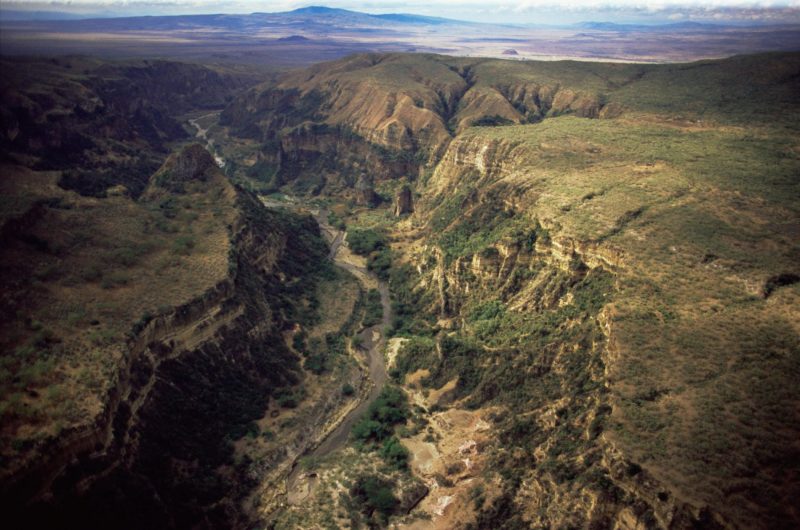
10) Hell’s gate national park
Hell’s gate national park is a highly recommended place for an occasional visit because of the abundant natural beauty. Regardless of age or culture, exposure to scenes of nature increases pleasant feelings, improves psychological well-being, enhances vitality and enriches meaningfulness. It increases our attention span and our ability to pay more attention to the things that matter. And it connects us to our loved and dear ones. According to some field studies, time spent in nature connects us to each other through developing stronger feelings of unity and belonging. Natural environments can impact our bodies by reducing our stress levels. The stress of an unpleasant environment can elevate our blood pressure, but a pleasant environment can reverse that. Research has shown that even a simple plant can have a significant impact on our anxiety levels. Nature deprivation reduces our capacity to cope with stresses and anxieties. The year-round weather makes Nairobi a perfect place to take advantage of everything in nature. Hell’s gate national park is a recommended place for a day trip because it is located just 110km from the city of Nairobi on the edge of Naivasha. It is a spectacular destination on earth.
Natural beauty of Hell’s gate national park
Hell’s gate national park is famed for the geothermal activity within its borders. It was a belief that Hell’s gate national park was the outlet for the freshwater lake that stretched all the way to Nakuru that supported early human communities. Besides flora and wildlife, it is home to over 100 bird species including vultures, augur buzzards as well as Verreaux’s eagles. Furthermore, it is an incredible quarter of the great rift valley with breathtaking scenery. Belching plumes of geothermal steam, towering cliffs, start rock towers, water gorges and scrub-clad volcanoes make it one of the atmospheric parks in Africa. In addition, the park’s gorge and central tower add to the picturesque beauty. The breathtaking scenery motivated the making of many Hollywood films in this place.
Njorowa gorge
Njorowa gorge is a 24km deep ravine. Hot water springs feed a brook that wanders down Al Njorowa as it flows through the landscape. Al Njorowa gorge broadens as it slides down Hell’s gate park and is a hiker’s paradise.
Fisher’s tower
Fischer’s Tower at Hell’s gate national park that stands 25m high came into being about 35 million years ago. It was as a result of the volcanic activity. Named after a German explorer, Gustav Fischer, it is a rock-climbing site. Therefore, seasoned rock climbers scale their way up this tower.
Park activities
Hell’s gate is where visitors can enjoy walking safaris, mountain biking, natural spa and rock climbing. Furthermore, families with kids can go running alongside zebra, elands, giraffes and gazelle. Cycling through this park is another pastime as there are rental bikes. Camps are also available at the park. So, it is a beautiful place to pitch up a tent under the Kenyan night sky.
Getting there
One of the routes is through Naivasha, where there is a church. The POWS built it during WWII. Drive past Longonot and Mai Mahiu. After that, turn left onto South lake road and keep driving past several farms. Continue to Elsa gate junction and turn left again. Another route is through upper escarpment road to Nakuru. It has some great viewpoints in great rift valley, lake Naivasha and Mt. Longonot. After that, turn left at Naivasha and continue through the town to old Naivasha road heading towards Nairobi. Then take a right onto South lake road.
Follow nature
Some things in life are free. Mother nature is one of them. That is to say, there is something in nature that does wonders to our souls, minds and bodies. Therefore, it is up to us to use the chance to enjoy the beauty around us for the greater good. And watch the power of nature unfold before you as you live life day by day. Be kind to yourself. Take a break and make a trip to Hell’s gate national park.
To receive a colourful digibook about Museum with videos, images and text, please fill out the following form or simply email us on safaris@safari-center.com

